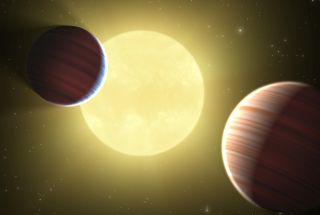Unexpectedly well-organised planetary systems

Astronomers at The Australian National University have found that planetary systems orbiting other stars are more organised than our Solar System.
In fact, the way that they are arranged means that astronomers can use an old law to predict where new discoveries will be made.
More than 200 years ago, it was found that the distances between the planets of our Solar System could be approximately described by a mathematical relation now known as Bode's Law.
Since the law was not fully understood, many modern astronomers think Bode's Law is a meaningless coincidence.
Astronomers at ANU have applied Bode’s Law to new data from NASA's Kepler satellite and find that planets orbiting other stars obey this law even more closely than the planets of our Solar System.
Tim Bovaird, PhD candidate at the Research School of Astronomy and Astrophysics and lead author of the study, says that this result means astronomers can now predict where extrasolar planets should be.
“Based on our predictions for the orbital periods of these planets, colleagues have been able to look more carefully at the Kepler data and have found a half-dozen new planets where we predicted they would be,” says Bovaird.
Convener of Planetary Science Institute at ANU, Dr Charley Lineweaver, says, "Bode's Law is a bit of a taboo, like marrying your cousin.
“We prefer to call it the Titius-Bode relation because 1) Titius thought of it first and 2) it's more of an organizing principle than a strict law.
“Our work shows that the Titius-Bode relation is definitely not a coincidence. It's real, it's just not an exact law."
More information
Bovaird, T. & Lineweaver, C., ‘Exoplanet Predictions Based on the Generalised TItius-Bode Relation’ will appear in the Monthly Notices of the Royal Astronomical Society, and can be found on-line athttp://arxiv.org/abs/1304.3341.
For interviews
Dr Charley Lineweaver
+61 2 6125 6717 or +61 2 6125 0822
Tim Bovaird
For media assistance please call the ANU Media Hotline – +61 2 6125 7979
IMAGE: NASA/AMES/JPL-CALTECH. View the original image.
